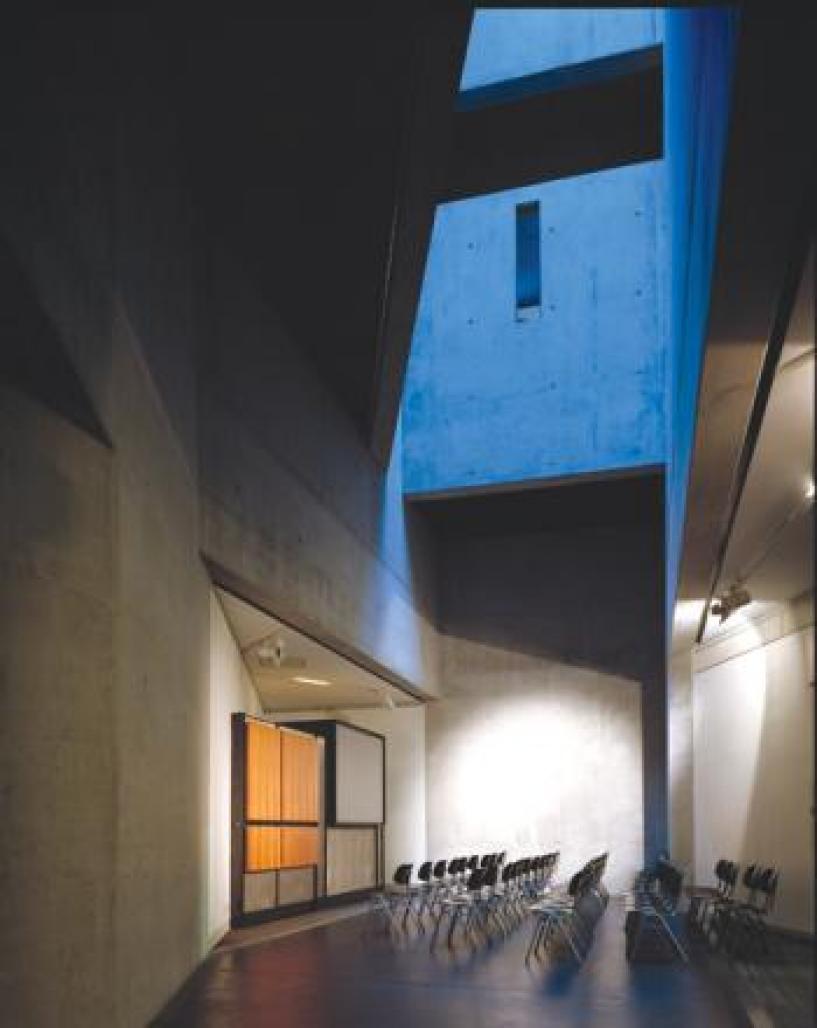This 3,068 sq. ft. space in Dan Libeskind’s addition to the Jewish Museum was developed by our office into an interactive computer library. Two hosts, one at the entry, the other near the research stations, demonstrate how the equipment is used and its potential for research. The hosts also guide people to available stations.
The casual visitor is given a demonstration showing the museum’s history, its exhibitions and an overview of Jewish and specifically German-Jewish history. Pedagogical and family history research is conducted at one of the individual or group computer stations where research includes not only the rich history of German-Jewish accomplishment but the fate of her people, institutions, and neighborhoods throughout and after the Nazi regime.
The lecture space is linked by similar networks, programs and equipment to that in the group stations but is fitted with a 75-inch monitor. In addition, a small fold out lectern- mounted monitor is provided so that a speaker can see the presentation in progress while his back is to this presentation screen.
The greatest challenge was designing these requirements into Daniel Libeskind’s extraordinary building. The library, while a permanent part of the museum, was not considered part of the program in Mr. Libeskind’s conception. Michael Blumenthal, the new museum director, made it a requirement by which time the building
was complete. Mr. Libeskind, as a consultant to the museum, requested that we not locate any permanent structures within the two void spaces which travel through the building to skylights on the roof. In addition, he hoped we would create a design which while appropriate in character to his building would be distinctively different from it.
The character of Mr. Libeskind’s acute angled concrete shapes, therefore, has been left completely undisturbed. Our solution was to create a series of steel and wood forms, orthogonally arranged throughout the spaces so that they would be perceived in counterpoint to the building’s geometry. We let our structures appear to be cut by the museum walls, adding even more to the spatial drama. In order to pull off this deceptively simple formal idea, we needed to develop some extraordinary details.
Most of the equipment is housed behind stainless steel mesh doors which provide air intake. Warm air is exhausted
from the wood roofs and is drawn to ducts at the perimeter walls. All the lighting had to be contained within these forms. {Overhead lighting is used only in emergencies.}
The lecture room is closed off by a large double-hinged panel attached to a storage cabinet. The video history
opens up to become four screens capable of being played at different angles, including one that is floor mounted for children. The lecture room void has chairs that are stored when area is not in use. And the lecterns
open by pivoting flush panels out from cabinet bodies to reveal shelves and monitors. While individual stations are provided with headsets, the group stations need a standard theatrical presentation format. Making them private prompted the staggered layout and the installation of separate overhead canopies, each containing its own focused speaker system.
2001
2001








.jpg)

